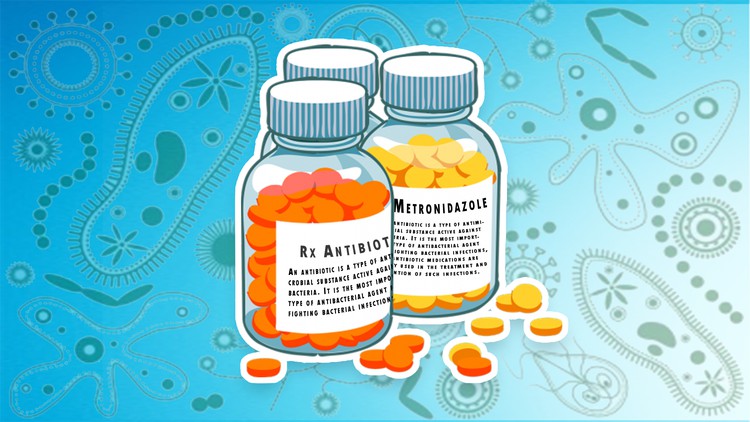
Mechanism of action, Side effects, Indications, and High-yield notes
What you will learn
The indication of all Antibiotics (Bacterial and Viral Coverage)
Mechanism of action of All Antibiotics
Side effects of all Antibiotics (High-yield for exams)
Resistance to Antibiotics and how it develops (for all classes)
Important notes and updated guidelines
Special contraindications for certain antibiotics
Description
All healthcare workers (Doctors, Nurses, or Pharmacists) deal with antibiotics on daily basis. They are the cornerstone of treating most patients, as infections are the most common reason for admission.
To tackle the challenge of memorizing all antibiotics, we will understand their mechanism of actions first. Then, we’ll mention everything you need to know for the clinical practice. At the end of each section we’ll mention all the important notes for exams.
Revision-Cards: you can access these PDF cards at the end of each section. They contain all the information we discussed and more. Having these cards on your phone or PC helps you look-up any information on-the-go. Convenient for memorization.
Quizzes: at the end of our journey we’ll have a long quiz that we’ll take together. We’ll explain our choices and talk about important notes. The quiz will help us memorize everything smoothly. A PDF with all quizzes and answers is downloadable and printer-friendly.
For pharmacists: equations like loading doses, clearance rates and others are mentioned and explained with examples.
We will talk in details about the following classes:
- Metronidazole
- Vancomycin
- Macrolides
- Acyclovir
- Aminoglycosides
- Clindamycin
- Amphotericin B and Nystatin
- Penicillin
- Tetracyclines
- Tuberculosis medications
- Fluoroquinolones
- Cephalosporins (all generations)
- Teratogenic antibiotics
- Azoles antifungals
- Carbapenems
- Chloramphenicol
- Chloroquine
- Daptomycin
- Echinocandins
- Sulfonamides
- Dapsone
- Trimethoprim
- Griseofulvin
- Hepatitis C therapy
- HIV therapy (NRTI, N-NRTI, Integrase inhibitors, and Protease inhibitors)
- Linezolid
- Monobactams
- Polymyxins
- Terbinafine
- β-lactamase inhibitors
Each section will cover a class of antibiotics with their mechanism of action, side effects, indications, contraindications, bacterial resistance, and important notes + Downloadable Revision Card.
At the end of the course we’ll have the long mock-exam with downloadable and printable sheet.
Content